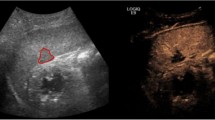Abstract
Background
Trauma morbidity and mortality outcome is better in high-volume trauma centers. However, there are few publications investigating the experience of high-volume centers with high non-trauma emergency load but seeing a relatively low incidence of trauma. The objective of this study is to review the presentation and outcomes for the low volume of patients presenting with penetrating injuries in a high-volume hospital.
Methods
Data were extracted from the Singapore General Hospital database between 1998 and 2007. There were 1,233 patients who sustained penetrating injuries and were brought to the hospital during the 10-year period. Of these, only 78 patients had injury severity score (ISS) values of 16 or more. In the same period, there were 1,270 patients with ISS > 15 who were admitted with blunt injury. SPSS 10.1 was used to conduct univariate and multivariate analyses to elucidate risk factors for mortality.
Results
Age, ISS, and trauma injury severity score (TRISS) were significant predictors of mortality. Gender and type of injury were not predictive of mortality. Mortality outcomes were independently predicted by age, TRISS, and ISS. The most common site of injury was the chest, followed closely by the head and neck. The abdomen/pelvis was the third most common site of injury. There was no significant difference in anatomical site injury pattern between the survivors and non-survivors. For both groups, chest injuries and head and neck injuries dominated, with maximal abdominal/pelvic injuries a distant third.
Conclusion
With a trauma system in place, high-volume centers with a low volume of penetrating injury patients can still manage uncommon injuries without jeopardizing patient care.
Similar content being viewed by others
References
MacKenzie EJ, Rivara FP, Jurkovich GJ, Nathens AB, Frey KP, Egleston BL, Salkever DS, Scharfstein DO. A national evaluation of the effect of trauma-center care on mortality. N Engl J Med. 2006;354:366–78.
Mackenzie EJ, Rivara FP, Jurkovich GJ, Nathens AB, Frey KP, Egleston BL, Salkever DS, Weir S, Scharfstein DO. The National Study on Costs and Outcomes of Trauma. J Trauma. 2007;63:S54–67. discussion S81–S86.
Singapore General Hospital official website. Quick facts. http://www.sgh.com.sg/AboutUs/QuickFacts/. Accessed 14 Feb 2008.
Baker SP, O’Neill B, Haddon W Jr, Long WB. The injury severity score: a method for describing patients with multiple injuries and evaluating emergency care. J Trauma. 1974;14:187–96.
Association for the Advancement of Automotive Medicine. The abbreviated injury scale—1990 revision. Des Plaines: Association for the Advancement of Automotive Medicine; 1990.
Bergeron E, Lavoie A, Razek T, Belcaid A, Lessard J, Clas D. Penetrating thoracoabdominal injuries in Quebec: implications for surgical training and maintenance of competence. Can J Surg. 2005;48:284–8.
Brooks A, Butcher W, Walsh M, Lambert A, Browne J, Ryan J. The experience and training of British general surgeons in trauma surgery for the abdomen, thorax and major vessels. Ann R Coll Surg Engl. 2002;84:409–13.
Fakhry SM, Watts DD, Michetti C, Hunt JP; EAST Multi-Institutional Blunt Hollow Viscous Injury Research Group. The resident experience on trauma: declining surgical opportunities and career incentives? Analysis of data from a large multi-institutional study. J Trauma. 2003;54:1–7.
Shafi S, Ahn C, Parks J, Nathens AB, Cryer HM, Gentilello LM, Hemmila M, Fildes JJ. Quality of care within a trauma center is not altered by injury type. J Trauma. 2010;68:716–20.
Brooke BS, Efron DT, Chang DC, Haut ER, Cornwell EE 3rd. Patterns and outcomes among penetrating trauma recidivists: it only gets worse. J Trauma. 2006;61:16–9. discussion 20.
Conflict of interest
None.
Author information
Authors and Affiliations
Corresponding author
Rights and permissions
About this article
Cite this article
Wong, T.H., Tan, G., Madhukumar, P. et al. Low incidence of penetrating trauma in a high-volume tertiary center: 10-year mortality review. Eur J Trauma Emerg Surg 38, 467–471 (2012). https://doi.org/10.1007/s00068-012-0195-9
Received:
Accepted:
Published:
Issue Date:
DOI: https://doi.org/10.1007/s00068-012-0195-9




